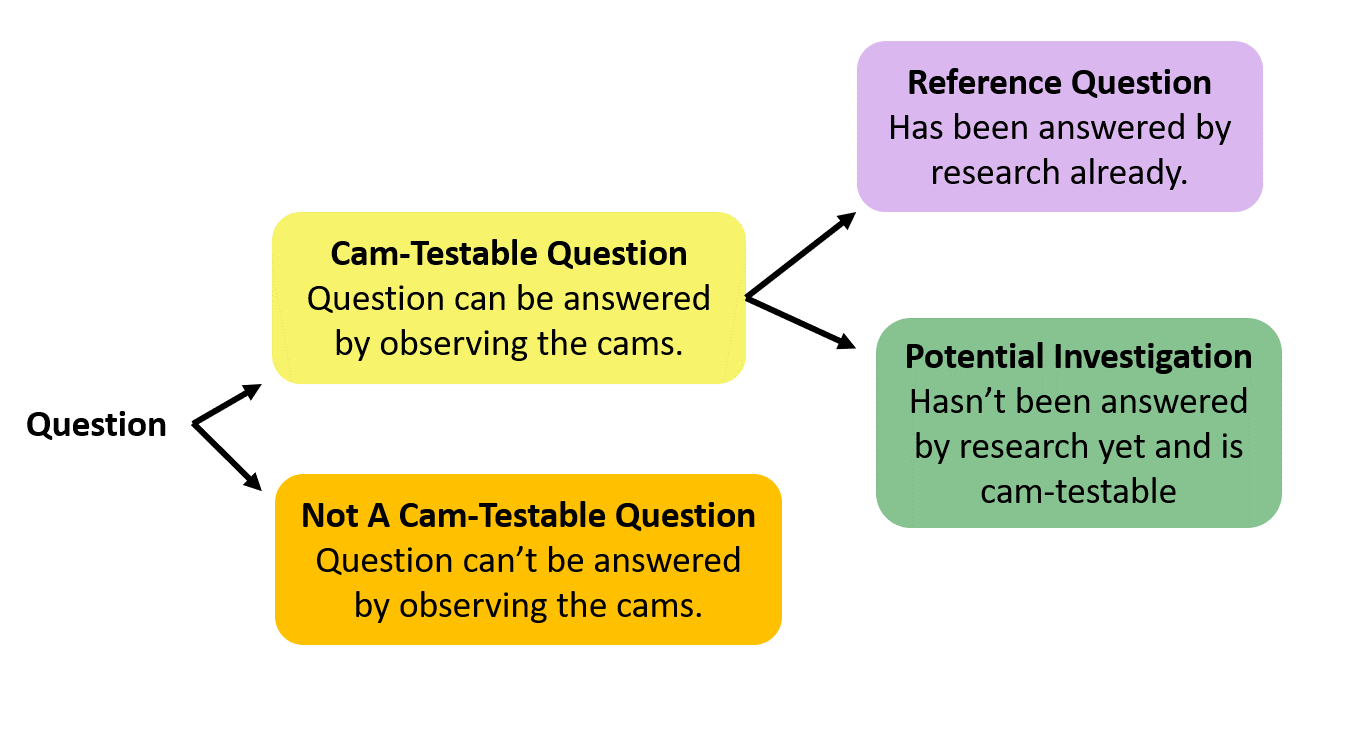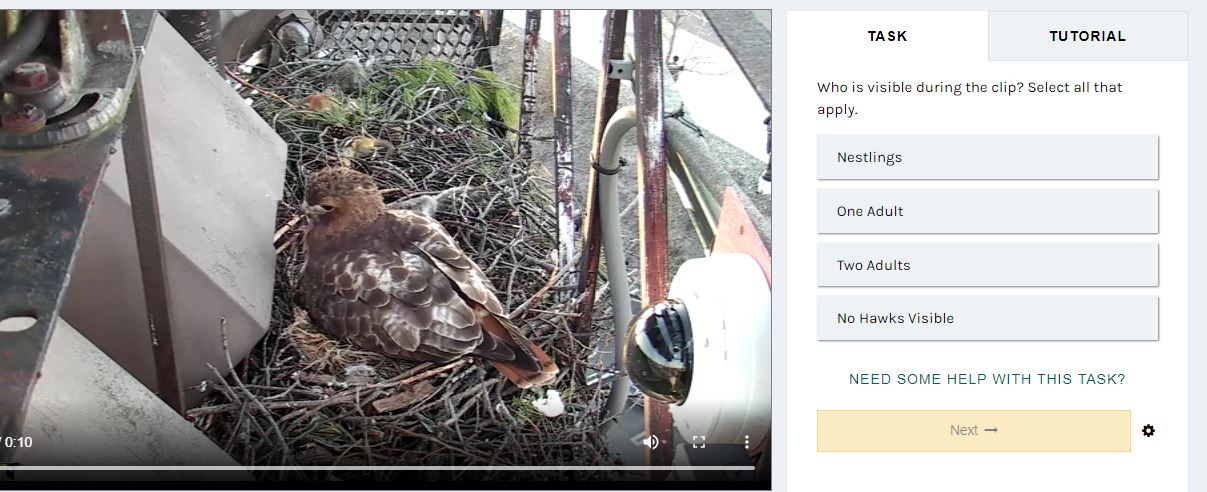The Data Tools
By Rachael Mady, April 14, 2020
When we watch the cams, we can come up with all kinds of questions once our curiosity is piqued. Taking note of interesting patterns is how scientific investigations start. Once we have questions in hand, the next step is to determine how feasible it would be to investigate them based on several criteria.
For each question, we need to consider if it is “cam-testable,” or able to be answered by observing the cam. Then, we need to consider if it is a “reference” question and has been answered before. We can use the flow-chart below to help us figure this out.
Once we determine that a question is cam-testable and hasn’t been answered before, we still need to refine the question and figure out if it is interesting, specific, measurable, and if there is enough time to answer it. Part of figuring this out is considering the two tools we have to collect data on the cams: Live Data Tagging and Archived Data Tagging.
We are planning to conduct two investigations, one using the Live Data Tagging tool and the other using the Archived Data Tagging tool. We have laid out the details of both tools to help us figure out which of our questions can be answered by either or both of these tools.
Tool #1: Live Data Tagging
Using the Live Data Tagging Tool, we can collect data while watching the cam in real time by clicking buttons to record the action as it happens.
We first used this tool in an investigation centered on the Panama Fruit Feeder cam to better understand when birds arrive at the feeder. Try out the tool for yourself (when you pull up the page, you’ll need to “Log In” with your Cornell Lab Account or create a new account).
Tagging data live is fun and exciting! Keep in mind, however, that collecting data in a live environment can be challenging. Things happen very quickly and we do not have the ability to rewind and watch something again using this tool.
The data we can collect needs to be relatively simple, easy, and able to be captured with the click of a button (in the current version of the tool, we have a maximum of eight buttons). Early user testing suggests that anything that takes more than a click can distract from what’s happening on cam, and make it difficult to ensure that important moments aren’t missed.
Tool #2: Archived Data Tagging
Using Zooniverse’s archived video tagging tool we will be able to collect data from archived video footage. Zooniverse is a platform that hosts hundreds of citizen-science projects in which volunteers record data in images and/or video clips.
We record video footage from the cam, cut it into 10-second clips, and then upload it into Zooniverse. Multiple participants watch each clip (this increases accuracy of collected data), and each person has the capability to rewatch and slow down each clip while tagging data. For an example of what this looks like, check out the data collection we did for a completed Bird Cams Lab project Hawk Talk.
Archived video tagging allows us to collect detailed information without worrying about missing any data. We can watch the clips and then watch them again, making sure to not miss anything. We can process these data at any time of year, using footage from any recorded cam or season. One important consideration when thinking about a question to answer with this tool is that the video clips are served up randomly (not in order) and each one can, at max, be 15 seconds long.
Use this information as a guiding post when refining questions that you come up on the Wonder Board or someone else has proposed.
Go to the Wonder board to help narrow in on which questions we should investigate.



